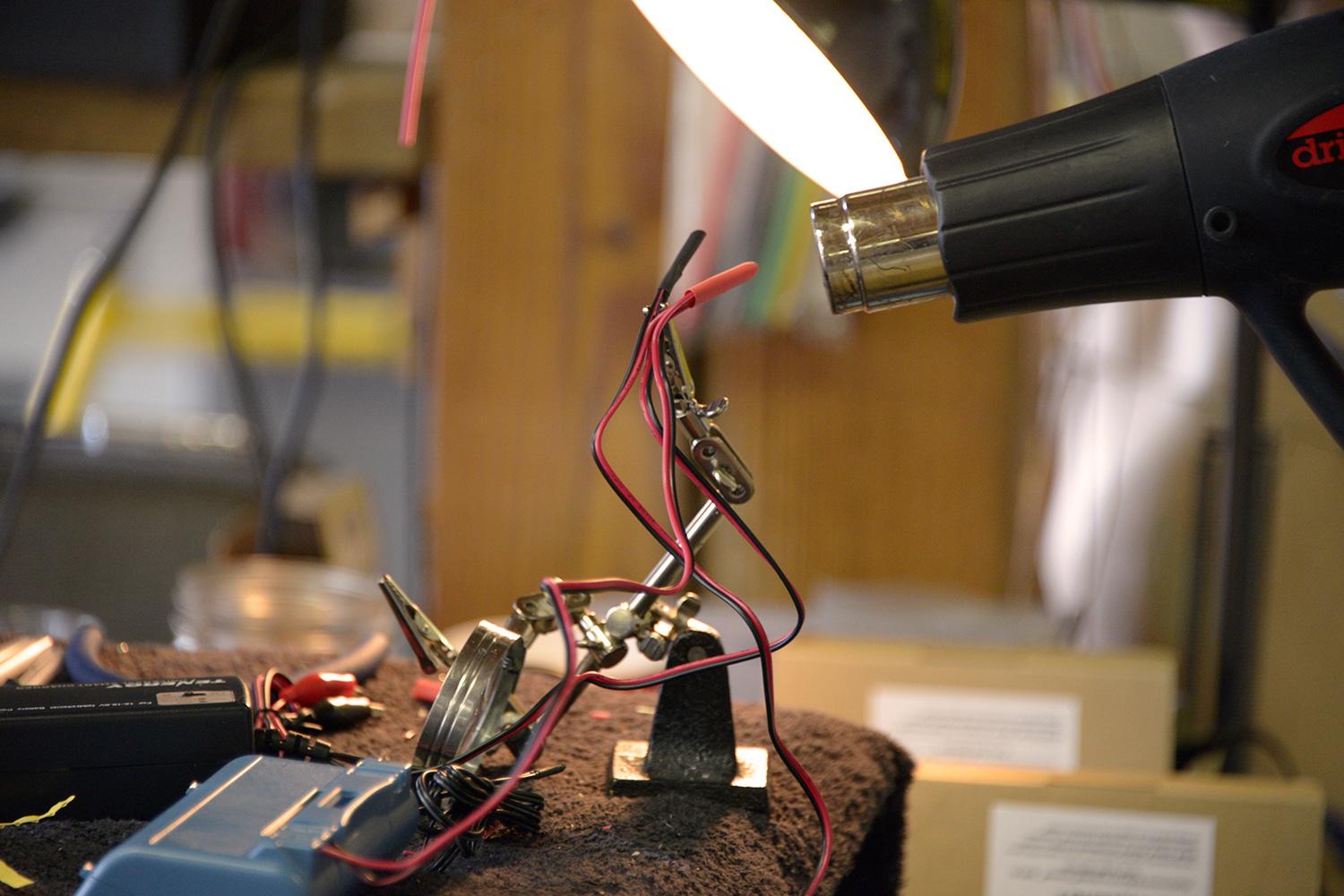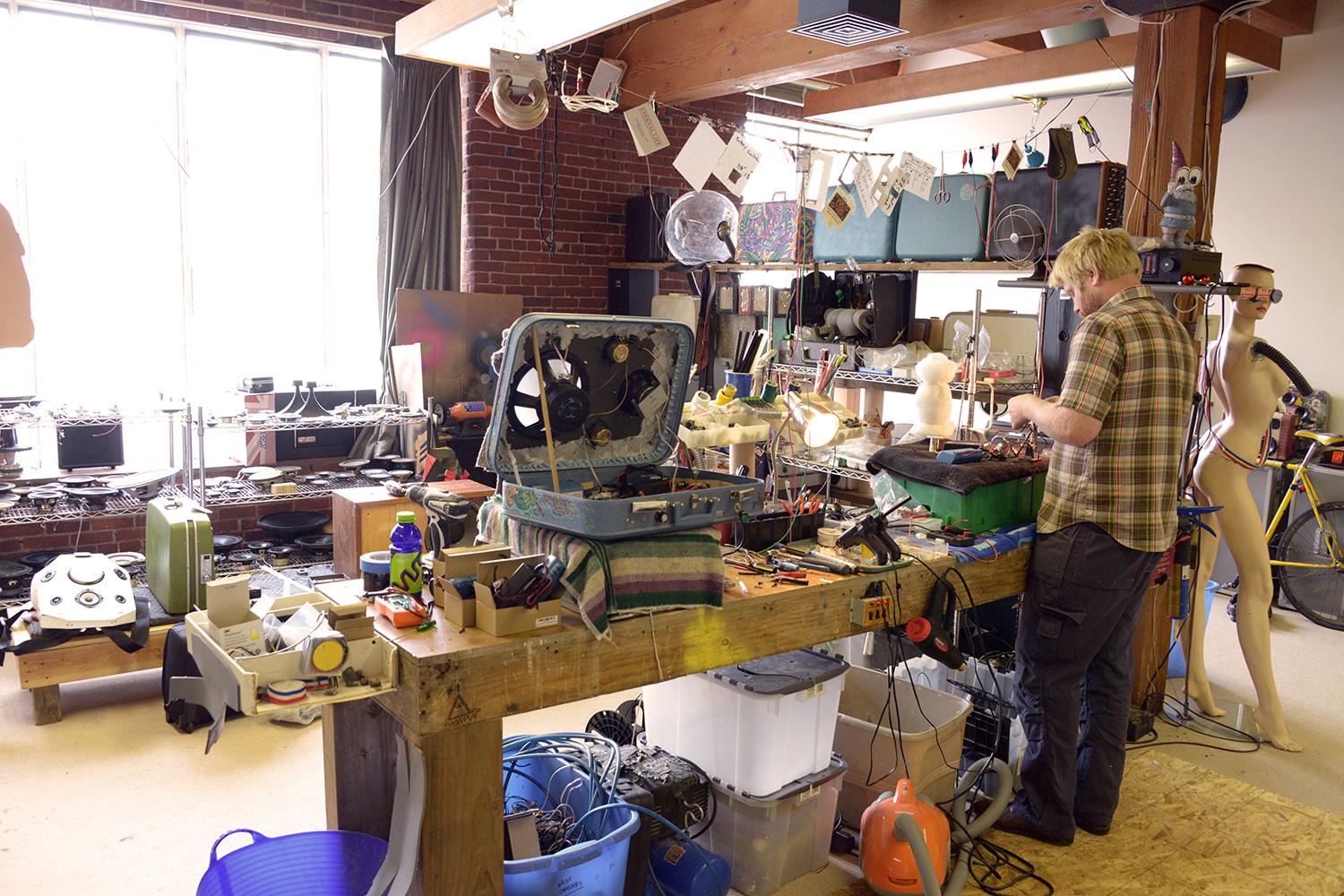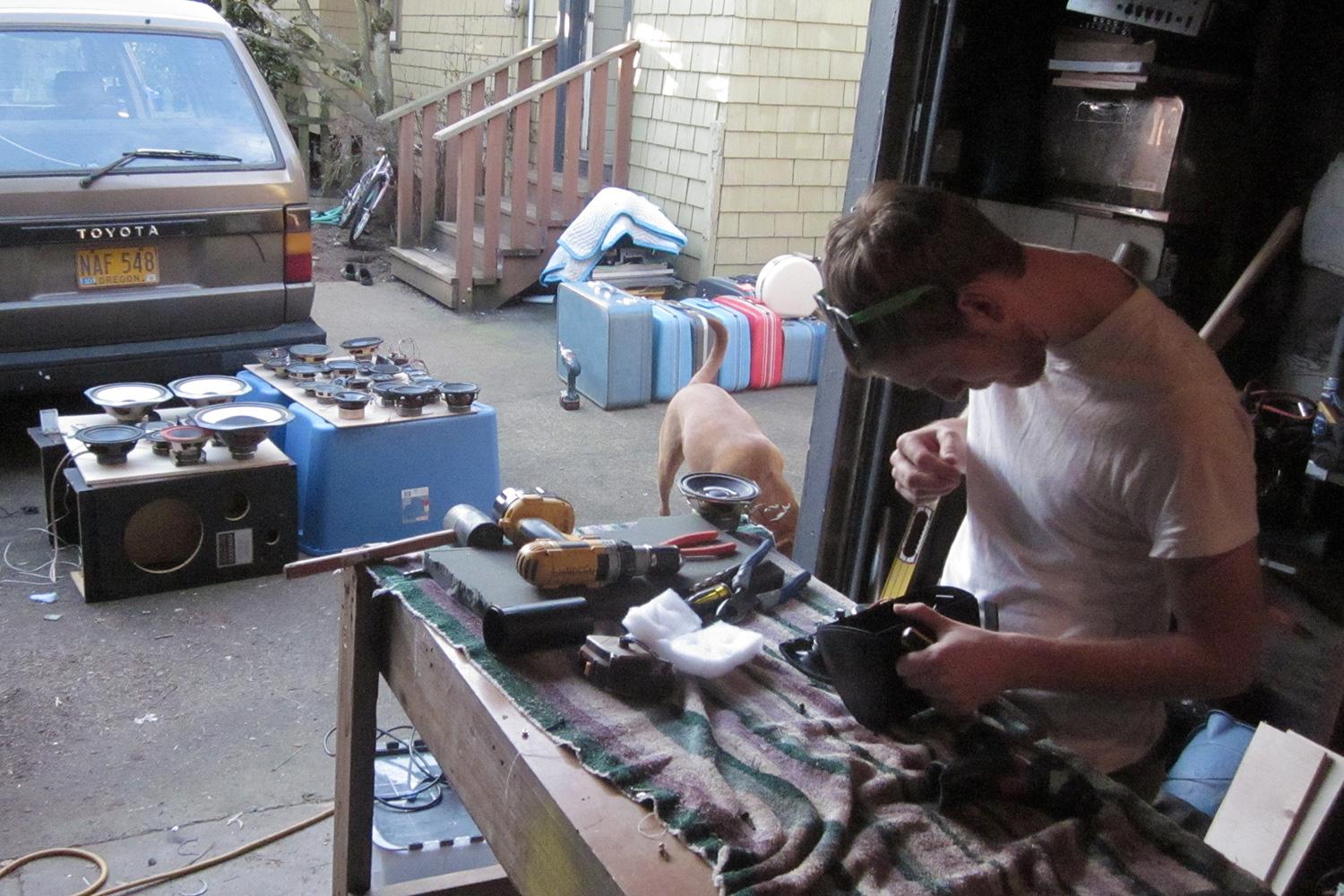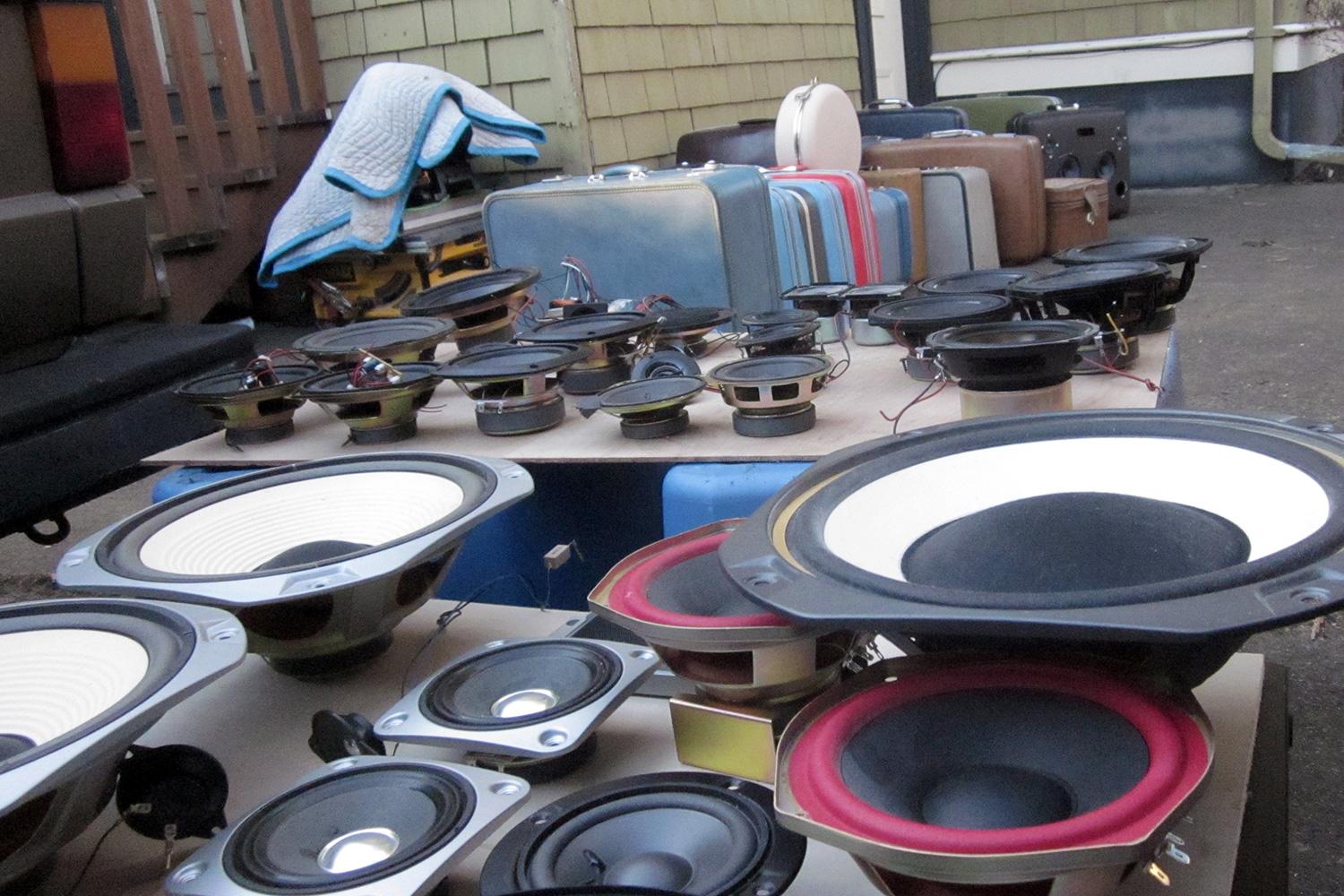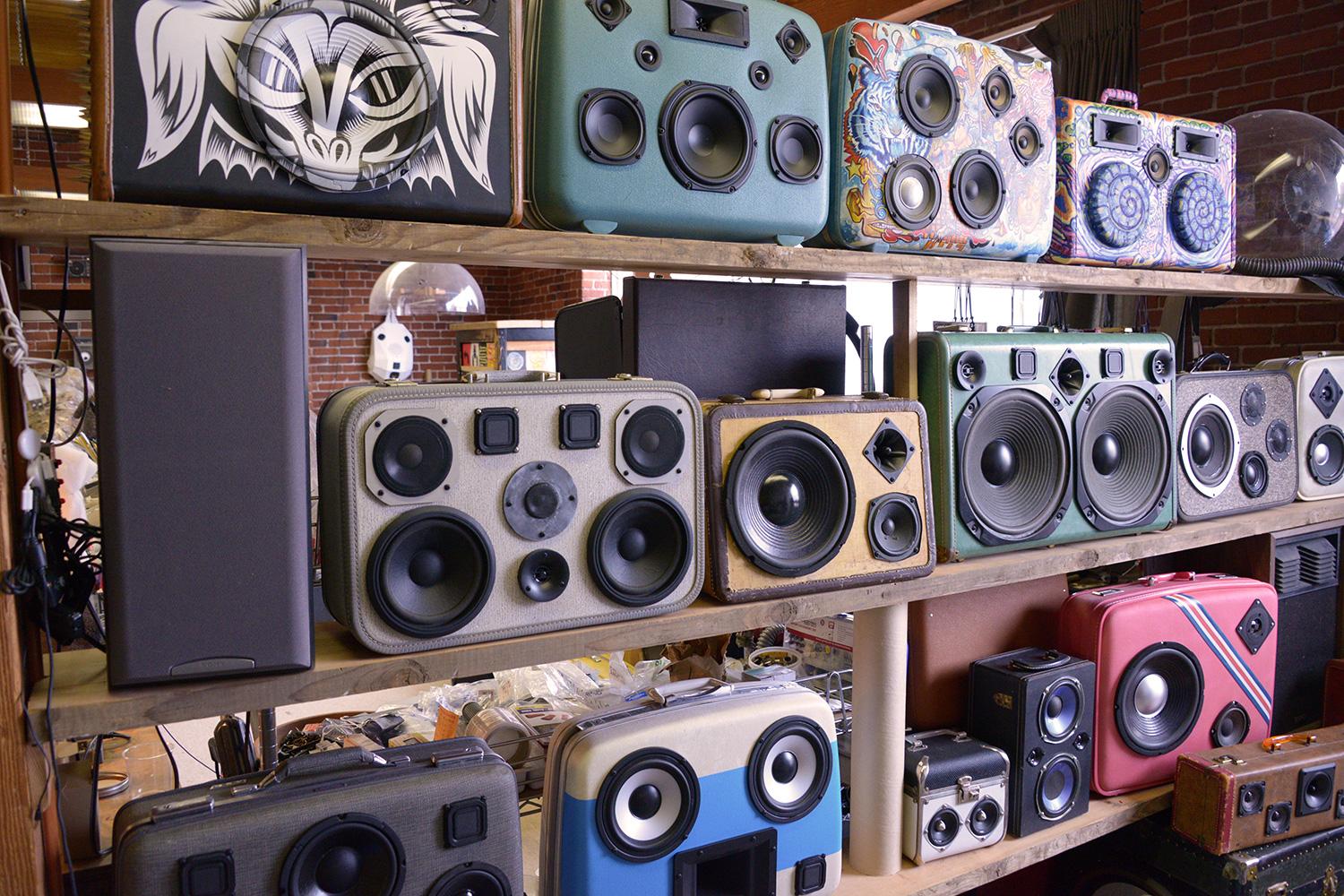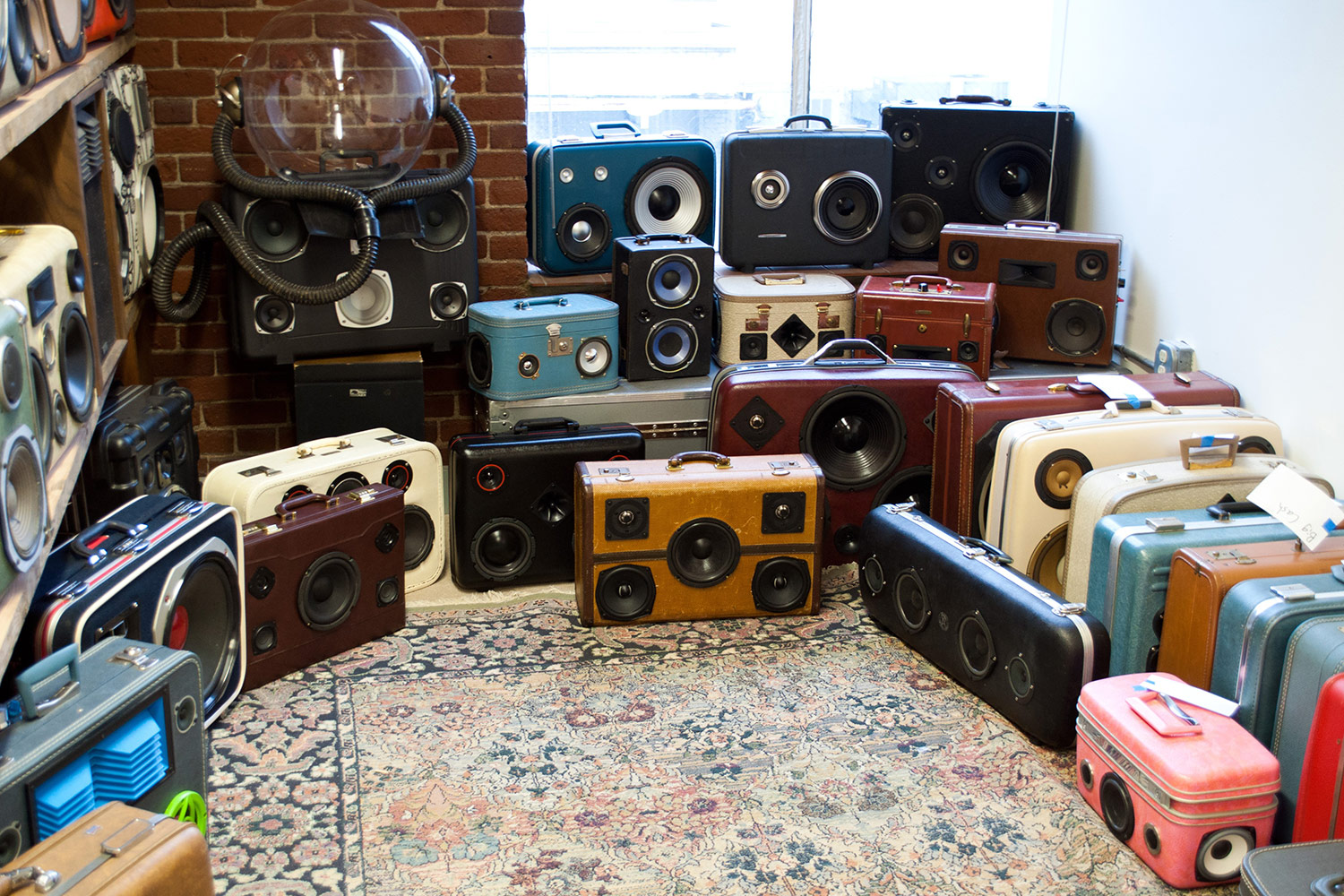As any fan of Portlandia can tell you: Portland, Oregon is a little…weird.
The unofficial city motto is: Keep Portland Weird. We have cowboy zombie crop circles, a world-famous donut shop which prides itself on a doughnut covered in Fruit Loops cereal, and a guy who wears a Darth Vader mask and kilt while playing bag-pipes on a unicycle. But all that weirdness occasionally congeals into something cool that the rest of the world picks up on and appreciates. For instance, Portland is a leader in craft beer, with more breweries than any other city in the world. It has redefined the notion of a food cart, with more than 700 located throughout the city. And it is home to the coolest thing that has happened to speakers in a long time: the Case of Bass.
What is a Case of Bass?
At its core, a Case of Bass is a portable speaker system packed into a vintage suitcase, briefcase, medicine case or pretty much any other kind of case you can think of. No two cases will ever be the same. Cases of different sizes can accommodate varying sizes, amounts and types of speakers. To that end, the company also lets you customize yours to taste. If you want a built-in rechargeable battery, they do that. Want a Bluetooth wireless option? That’s covered too.
The resulting product is as much a piece of art as it is a functional audio system, and they tend to draw a lot of attention. In the three minutes it took for us to walk our review sample half a block down the street and up 10 floors in an elevator, we got four comments from interested onlookers, and at least half a dozen stares. We don’t even get that kind of attention rolling a $3,500 65-inch plasma TV down the street on a hand truck.
Short on cash, but not creativity
If you ask Ezra Cimino-Hurt what his job title is, he’ll more or less make it up on the spot. Titles aren’t really his thing, but on this day, Ezra tells us he is “co-founder and current head dude in charge at Case of Bass.” Ezra may not take himself too seriously, but the passion he shows for what he’s creating is a clear indication that he absolutely means business.
Like so many other great businesses, Case of Bass was born in a garage.
It was on an especially cold winter day when the concept for the first Case of Bass was formed. Ezra worked as a remodeler and contractor and was used to things getting slow in the winter months. Money was predictably tight during this time, but on this particular day, he came upon something that he really wanted to have.
While cruising the aisles at a Best Buy store with his brother, Ezra stumbled on a portable audio system that struck him as particularly cool. “It was made by TDK and it was something we hadn’t seen before. It was really clean and neat, but it had that really retro feel with the exposed drivers and a big handle … it felt like a boombox. We wanted one, but it was like $350 or $400, and so with not a lot of carpentry work and a whole lot of time on our hands, we decided to build something.”
The first Case
Like so many other great businesses, Case of Bass was born in a garage. Short on materials, Ezra went hunting at local thrift shops and recycling centers. “We went and harvested a bunch of old electronics and speakers at a friend’s electronics recycling company,” says Ezra. “With a car full of junk, we headed back to my one car garage and started disassembling stuff and de-soldering wires. We had to be really careful, because we had the worst tools: a crusty old soldering iron, the dullest nail-pullers.”
They also had to be careful because they really had no idea what they were doing. One wrong move could destroy an amplifier, and they couldn’t afford to burn money on what was supposed to be a homebrewed boombox project.
With amplifiers harvested and drivers at the ready, Ezra needed to find something to put them in. “It seemed stupid to build something out of wood…it looked homemade and dumb. Even though this thing wasn’t for sale – it was for us – we just wanted it to look cool,” recalls Ezra.
That’s when the team turned toward an old case. “I think it was a sewing machine case or something like that,” says Ezra. “But essentially it was a wooden box with a vinyl cover or some kind of faux leather and a handle that we could open, put stuff in and close again. It was great!”
Ezra and his brother wound up going through 20 different cases before they got the look they wanted. But once they did, they knew they had something special.
Organic growth
The first functional Case of Bass, by Ezra’s description, lacked any sort of finesse. It was a hodge-podge of parts strung together with cables loosely hanging outside the case. It was fine for use at a friend’s birthday party, but nothing the team would have ever dreamed of selling.
Such customization in audio is rare, but Case of Bass delivers it in spades.
But friends and family pushed Ezra and his brother forward, and they continued to experiment. Along the way they started to expand their knowledge of basic electronics engineering. They made the systems more efficient, easier to use and more practical.
Once Ezra had a few Cases he was proud of, he placed some in some local consignment shops and a few others online. The next thing he knew, he was selling his invention.
Later, Case of Bass would get some exposure on the Internet. A Playboy spread helped garner some attention for the company, but it was a story by the UK’s Daily Mail publication that started driving customers to the Case of Bass website. At that point, Ezra’s inbox blew up.
Eventually, the company outgrew the garage operation and had to move. Case of Bass’ headquarters is now located in on the second floor of a small building smack in the heart of downtown Portland. The modestly-sized space contains a computer desk, a two-person workbench and several boxes of drivers, electronics, switches, potentiometers, batteries, Bluetooth chips and shelves upon shelves of different Case of Bass systems. One part gallery, one part workshop, the space already looks like it may be too small to handle the aggressively growing business. In just over a year, Case of Bass has shipped about 180 units into about 12 different countries, and the orders are beginning to pour in hot and steady.
More than just style
For Ezra and his current partner, Master Technician Jay Yovu, the visual element of the Cases they create is the number one priority. Once that is figured out, everything else falls into place. It’s a practice that any well-trained engineer will balk at, but somehow, these guys have made it work.
Since its humble beginnings, the Case of Bass team has grown to standardize a few components like the rechargeable battery, AC plug, input jack and Bluetooth chip – not everything is recycled anymore. But the voicing or audio tuning of these systems is performed on a case-by-case basis (no pun intended). Different drivers behave in different ways, and no two cases use the same driver components. So, different crossover components have to be used each time, and the process of getting the right sound becomes a practice of trial and error.
While their methods may be highly unorthodox, they do work. Every Case of Bass system we’ve heard so far sounds better than any boombox produced in the 80s or early 90s. Plus, they look way cooler than a giant box of metal and plastic. There’s a certain personality that each of these Cases possess, and some even tend to call out to you. Such customization in audio is rare, but Case of Bass delivers it in spades.
Art inspiring artists
Case of Bass isn’t just attracting the attention of those looking for a cooler looking speaker system. As an art piece, the company also attracted other artists eager to take what Case of Bass has created and augment it with their own flavor. A wall at Case of Bass HQ features one such collaboration, the speaker virtually disappearing into the matched background. Another artist took a darker, heavy metal approach, which Case of Bass captions with, “The demon will eat your face.”
And that’s just the beginning. During our visit, Ezra showed us 20 DIY Case of Bass kits that were being assembled to send out to some of the best local designers, artists and craftspeople in Portland as part of a charity event held during Design Week Portland. Each recipient will get to design, assemble and decorate their own vision of a Case, which will be auctioned off later.

We’ve had our Case of Bass sample for five days now, and everywhere we take it, it becomes the focal point of the conversation. Sometimes, we don’t even get a chance to turn them on because people are too busy asking questions about it. The appeal is undeniable. In a market saturated with bland, rectangular, battery-powered boxes with undersized speakers, Case of Bass brings character and punch to portable audio. Because of that, we have a feeling Case of Bass is about to get really popular, really fast. As far as we’re concerned, a Case of Bass is a top pick for any gift list.
To learn more about ordering a Case of Bass, you can visit the company’s website here.



